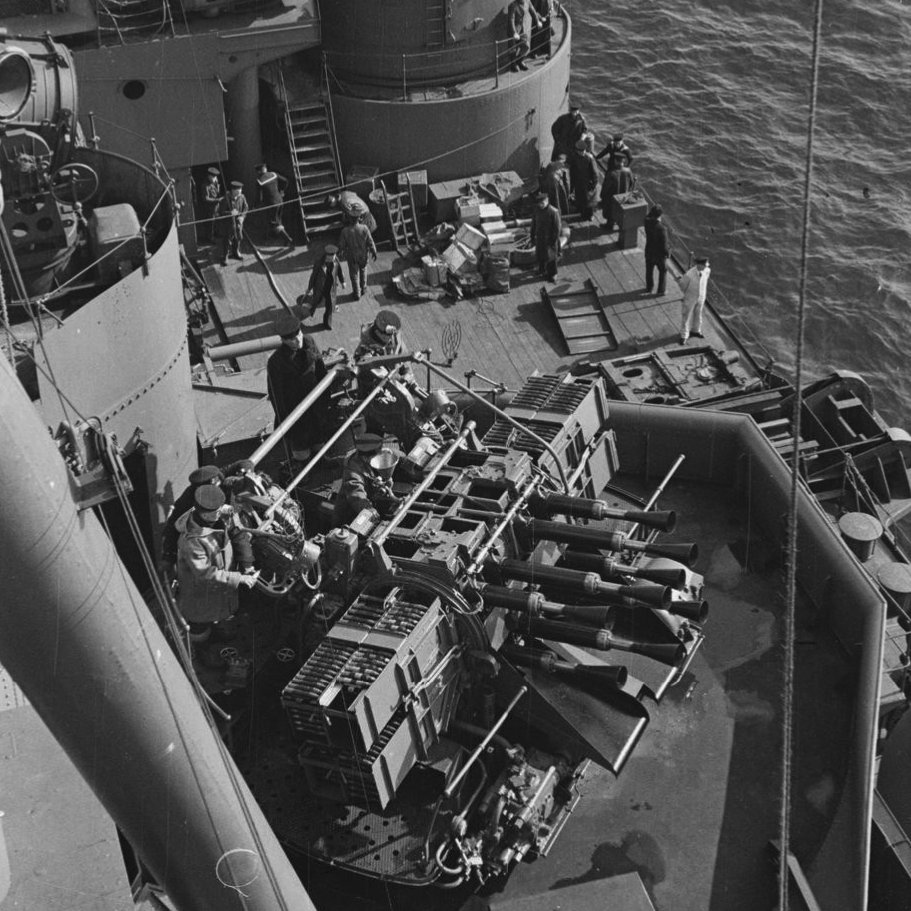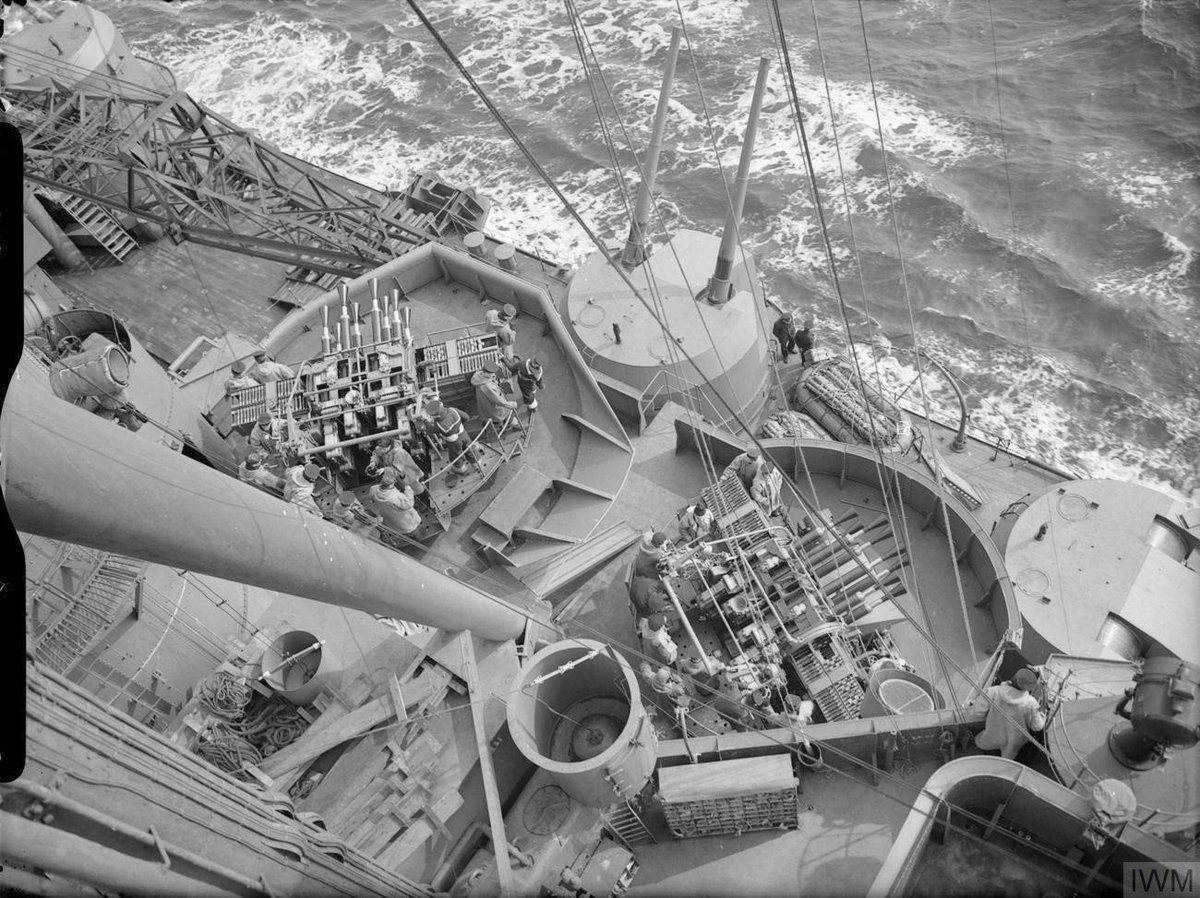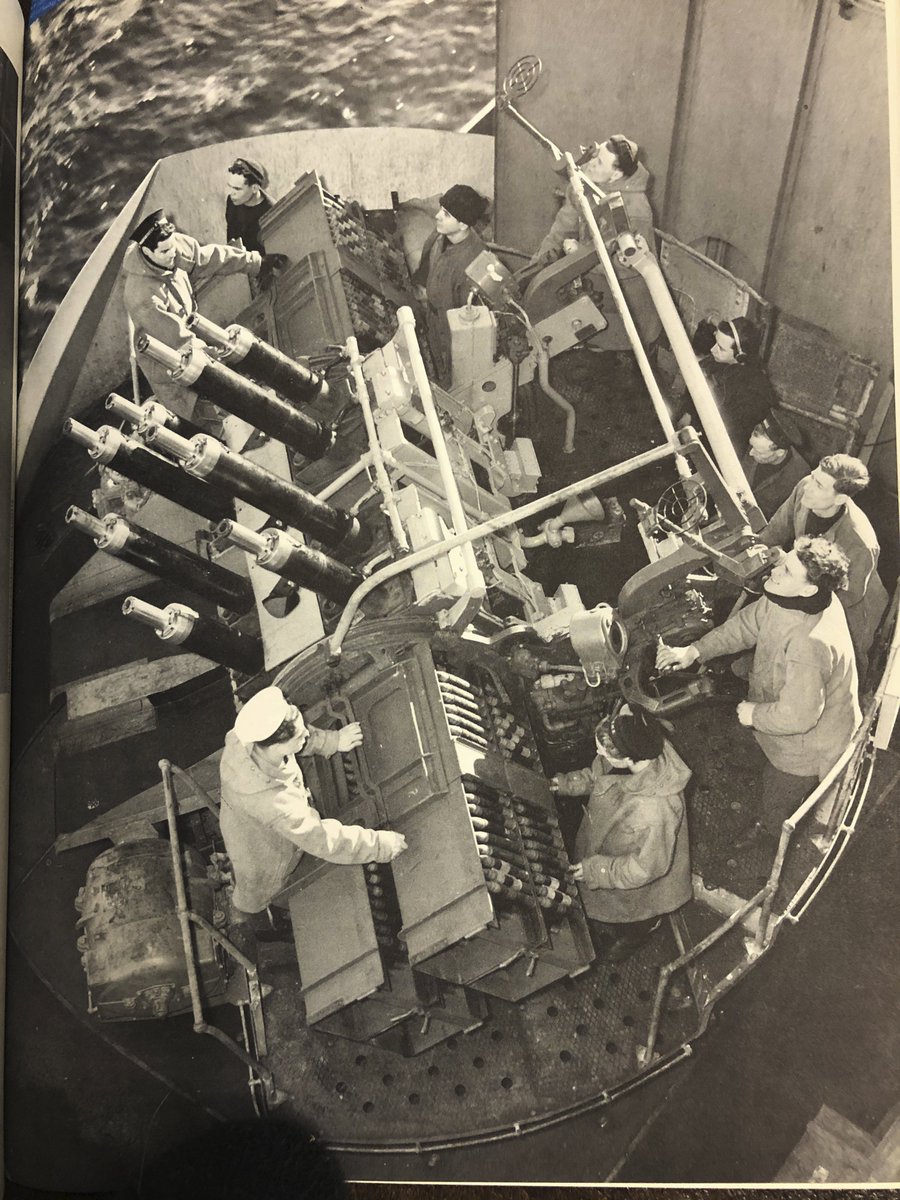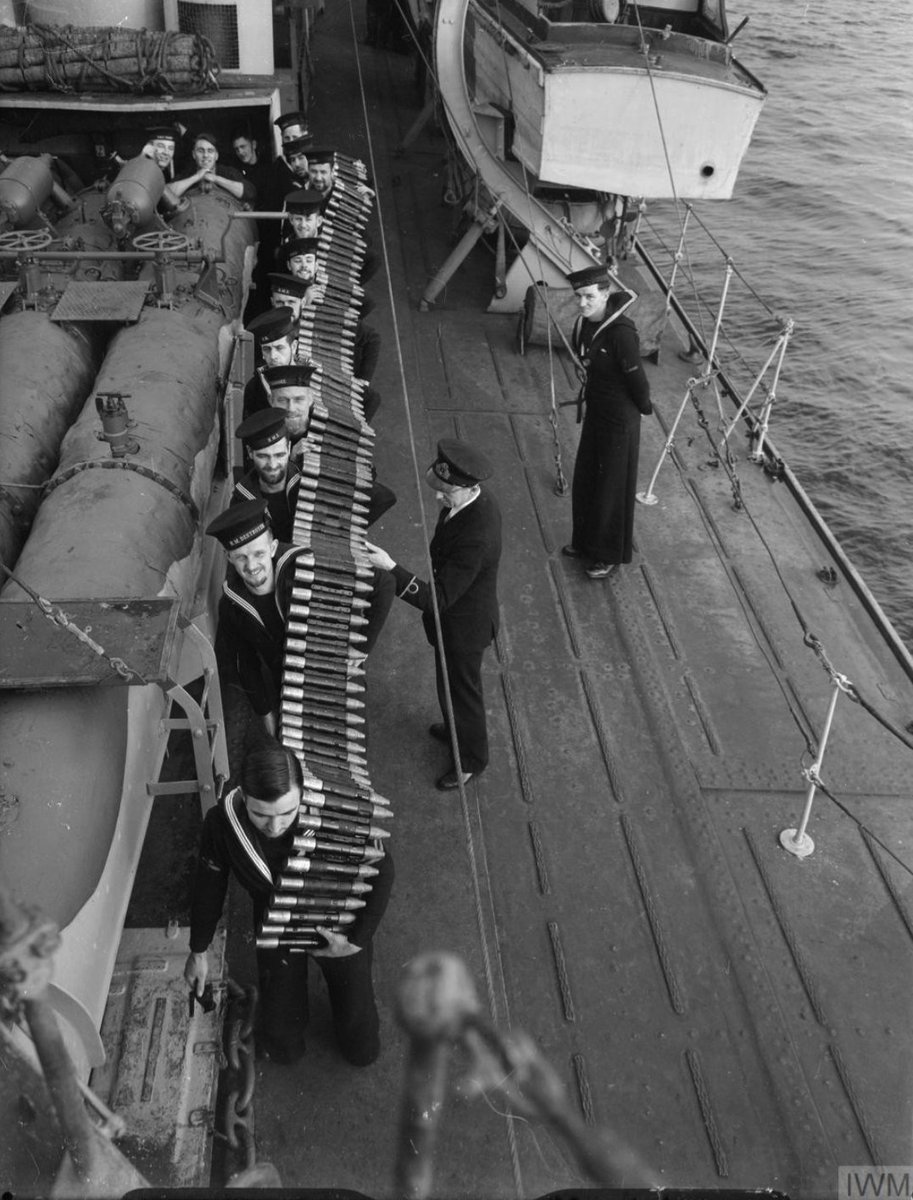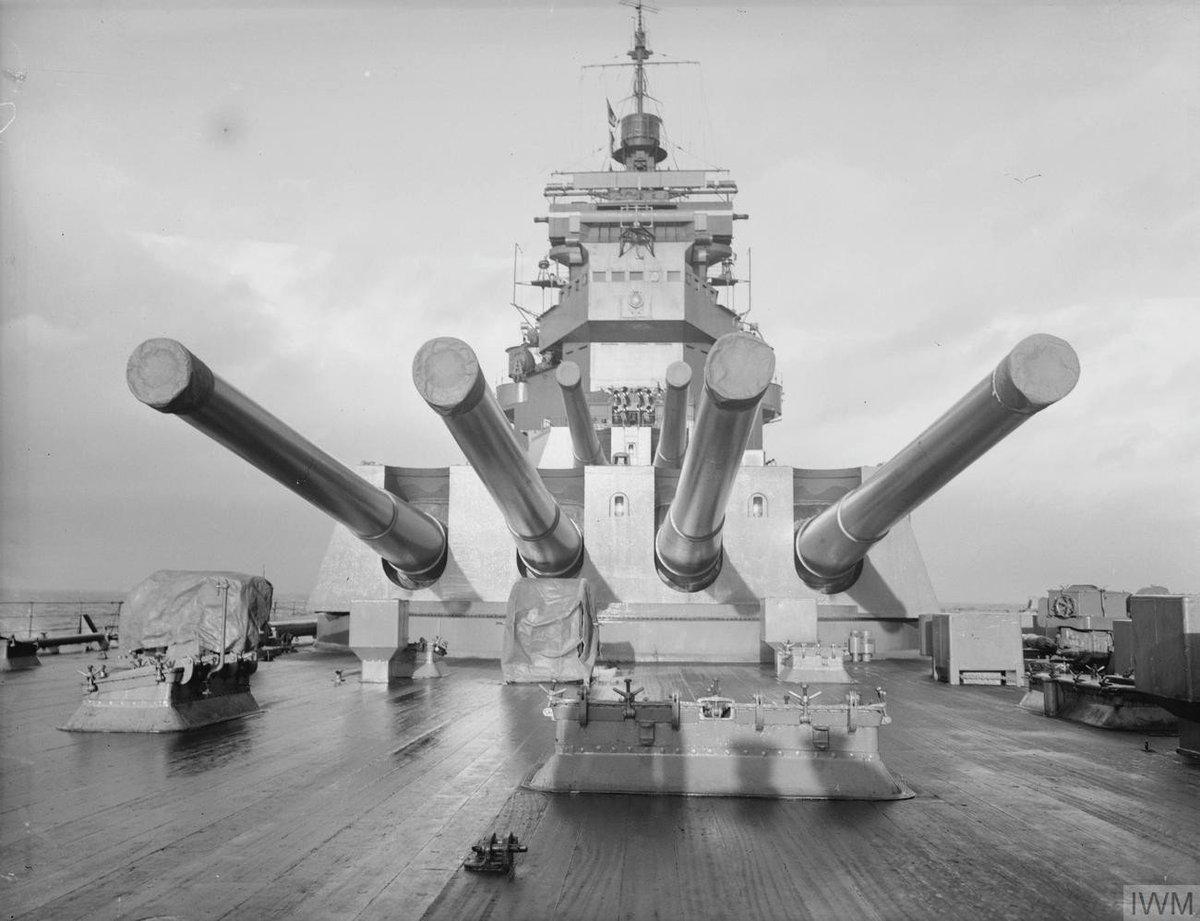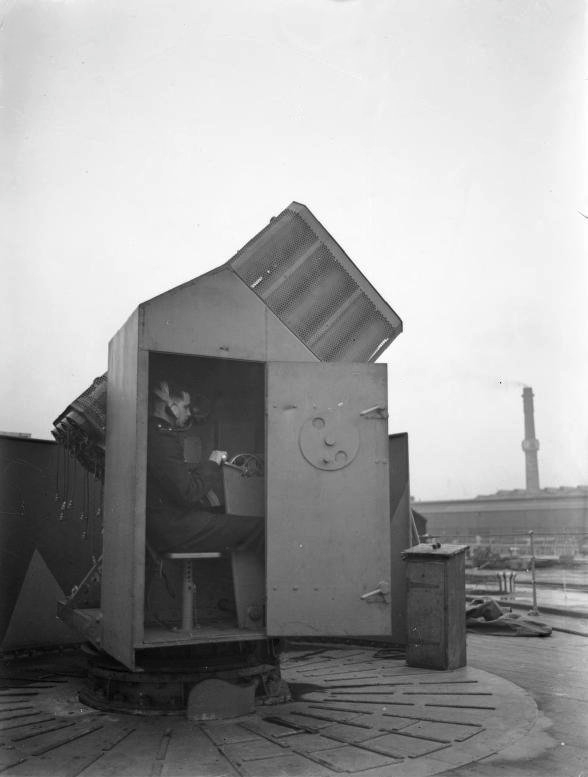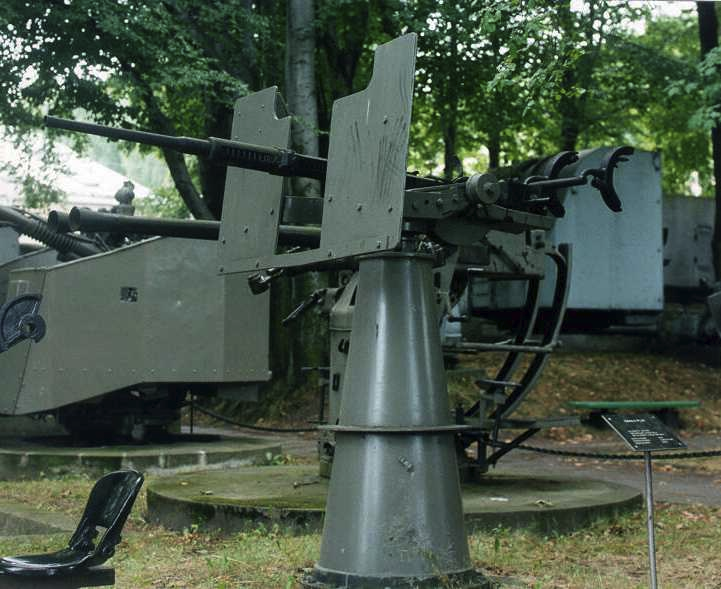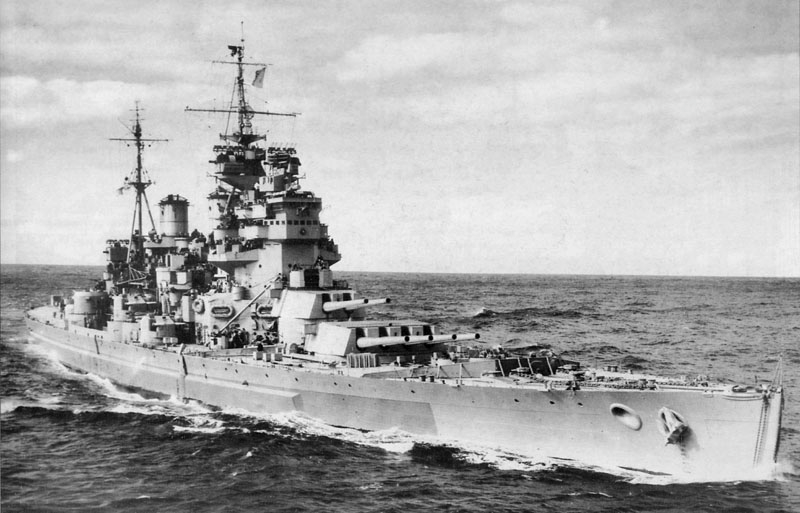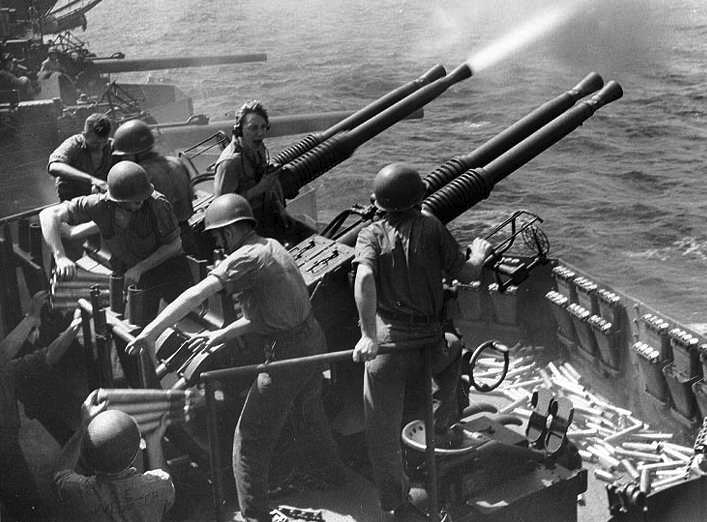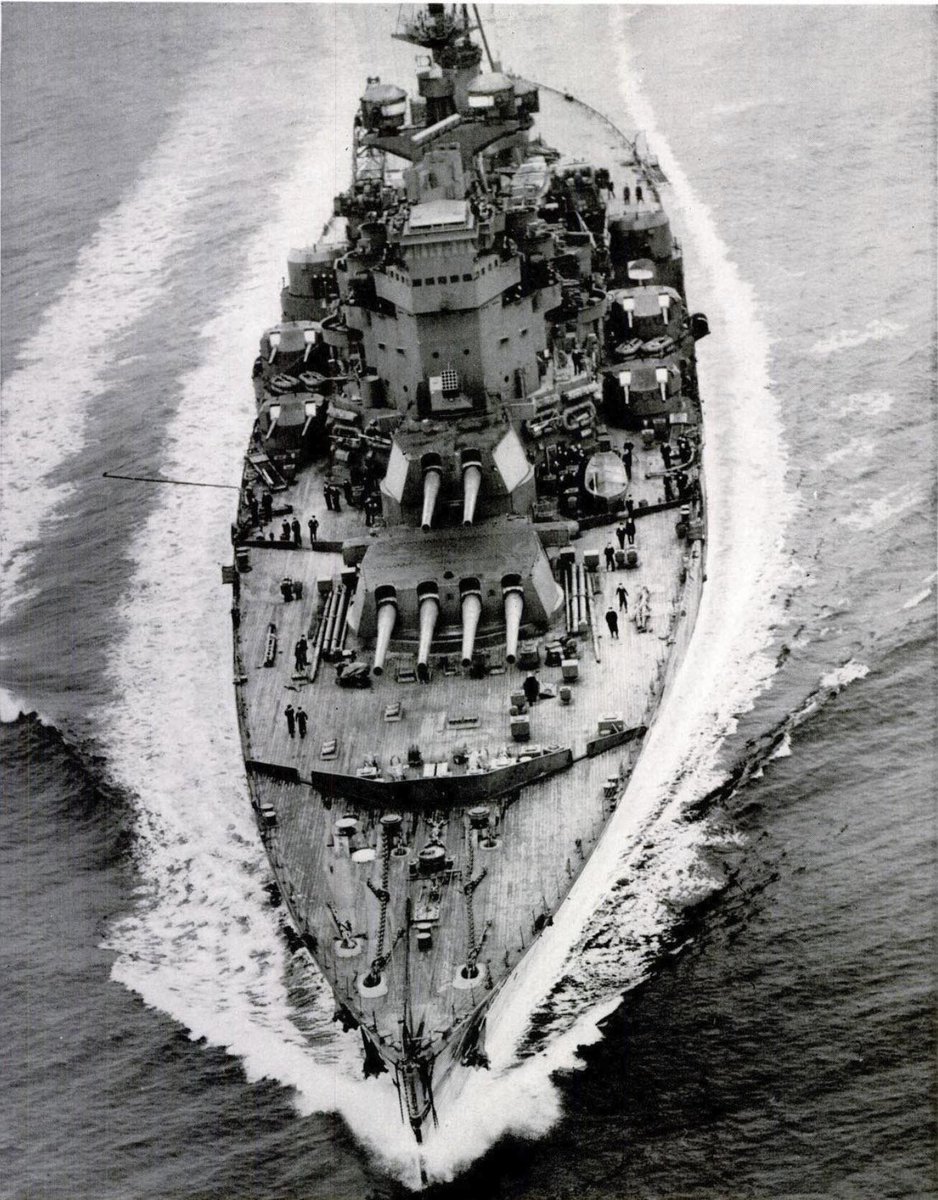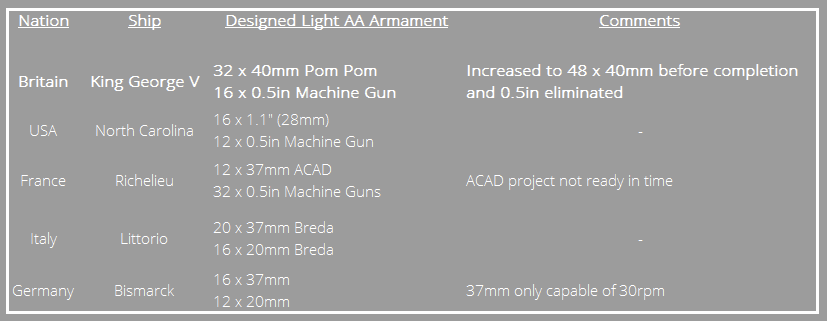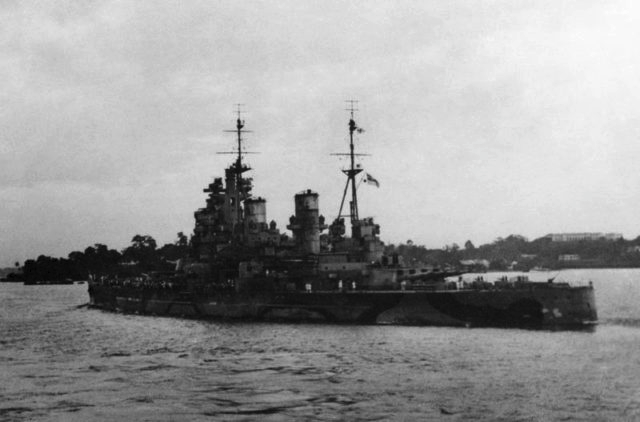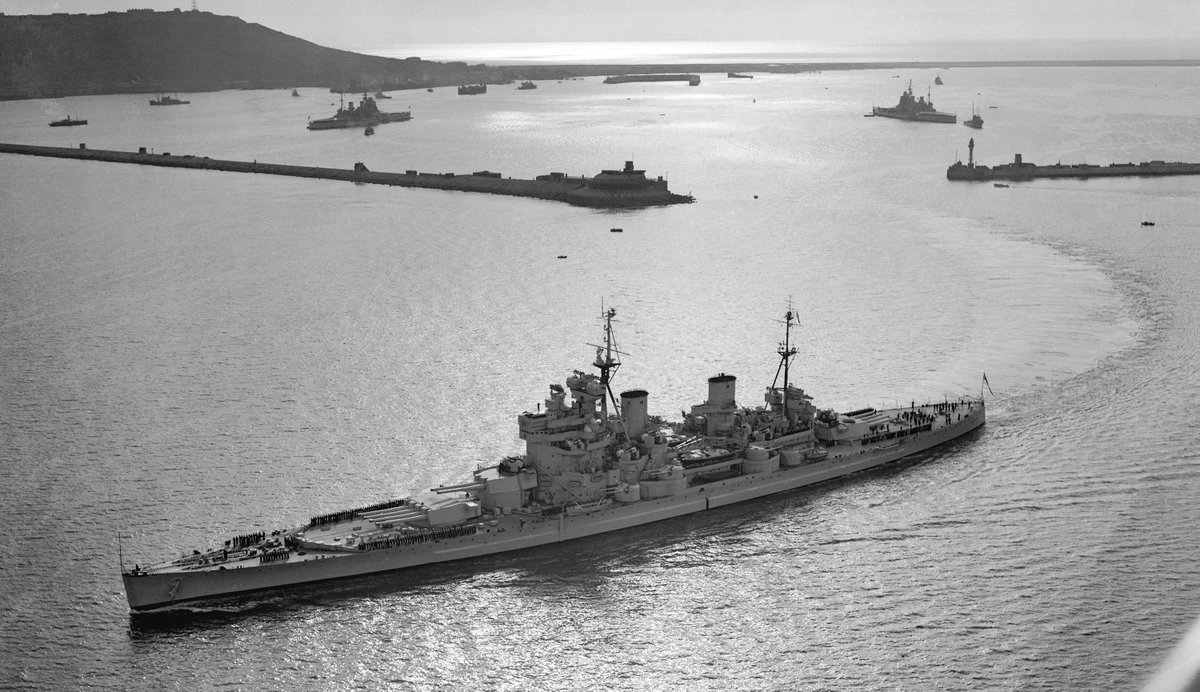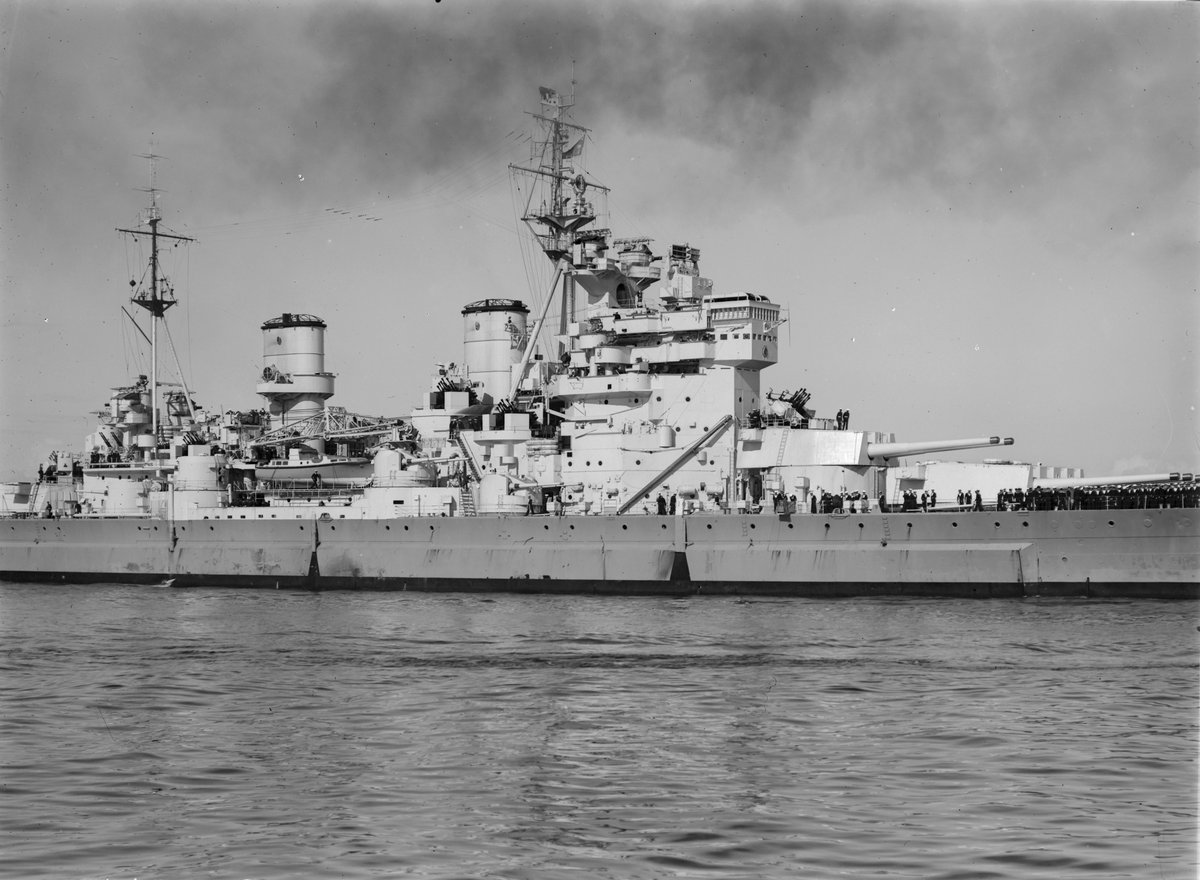While the dual-purpose 5.25-inch guns would suffice to break up incoming air attacks, a dedicated anti-aircraft weapon would be needed closer in to try and shoot down enemy aircraft.
(2/24)
(2/24)
As designed the King George V class had the following anti-aircraft weapons:
- 4 x Octuple Pom Poms. Two of these were fitted on each beam, atop the hangar.
- 4 x Quad 0.5in machine guns. Two were mounted on the boat deck, one on & #39;B& #39; turret, and one on & #39;Y& #39; turret.
(3/24)
- 4 x Octuple Pom Poms. Two of these were fitted on each beam, atop the hangar.
- 4 x Quad 0.5in machine guns. Two were mounted on the boat deck, one on & #39;B& #39; turret, and one on & #39;Y& #39; turret.
(3/24)
As it happens, the Quad 0.5in machine guns were never carried, so I won& #39;t go into detail on them. They saw widespread service throughout the Fleet but were not particularly effective against modern aircraft.
(4/24)
(4/24)
The mainstay of the KGV& #39;s anti-aircraft defence was the Octuple Pom Pom.
The & #39;2 Pounder Pom Pom& #39; was a relatively old weapon although still pretty effective. Development started in the early 1920s although the first didn& #39;t enter service until 1930.
(5/24)
The & #39;2 Pounder Pom Pom& #39; was a relatively old weapon although still pretty effective. Development started in the early 1920s although the first didn& #39;t enter service until 1930.
(5/24)
The Pom Pom had a calibre of 40mm (1.575"). Eight barrels of this calibre strapped to the same mount was a hefty weapon and weighted 15 tons.
Rate of fire was 96-98 rounds a minute using controlled firing gear, or 115 under full automatic - per barrel.
(6/24)
Rate of fire was 96-98 rounds a minute using controlled firing gear, or 115 under full automatic - per barrel.
(6/24)
On mount ammunition supply was 140 rounds per gun, allowing over a minute of continuous fire without reloading.
Each mounting had a separate director for fire control. This directors later gained radar.
(7/24)
Each mounting had a separate director for fire control. This directors later gained radar.
(7/24)
In 1938 a & #39;High Velocity& #39; version was introduced, which according to Navweaps increased effective range by 40%. Tracer rounds were carried from 1941 onwards.
A good video on the Pom Pom is from @ArmouredCarrier
https://www.youtube.com/watch?v=utrkd4SDRdw
(8/24)">https://www.youtube.com/watch...
A good video on the Pom Pom is from @ArmouredCarrier
https://www.youtube.com/watch?v=utrkd4SDRdw
(8/24)">https://www.youtube.com/watch...
The Pom Pom had its share of issues, but it was an important part of any RN ship& #39;s anti aircraft defence.
It& #39;s primary drawback was the low velocity compared to other weapons (even in the High Velocity version). But it& #39;s still 8 x 40mm cannon with director control.
(9/24)
It& #39;s primary drawback was the low velocity compared to other weapons (even in the High Velocity version). But it& #39;s still 8 x 40mm cannon with director control.
(9/24)
During construction the Quad Machine Guns were eliminated from the design and the required number of Pom Poms increased to 6 - the KGVs would now carry them on & #39;B& #39; and & #39;Y& #39; turrets.
(10/24)
(10/24)
However, these extra two mounts were not ready for KGV and PoW carried the & #39;Unrotated Projectile Launcher& #39; instead.
This was a rocket launcher which fired aerial mines on parachutes. The idea was that aircraft would hit the wires and draw the mines upon themselves.
(11/24)
This was a rocket launcher which fired aerial mines on parachutes. The idea was that aircraft would hit the wires and draw the mines upon themselves.
(11/24)
There& #39;s a good 1 minute video on the system here:
https://www.youtube.com/watch?v=QW20b5utDv8&t=9s
Designed">https://www.youtube.com/watch... as an interim system while Pom Pom production caught up, nonetheless it was terrible, and all UP mounts were quickly removed. The Pom Poms were fitted quickly afterwards!
(12/24)
https://www.youtube.com/watch?v=QW20b5utDv8&t=9s
Designed">https://www.youtube.com/watch... as an interim system while Pom Pom production caught up, nonetheless it was terrible, and all UP mounts were quickly removed. The Pom Poms were fitted quickly afterwards!
(12/24)
While the Pom Pom proved a good inner layer defence, war experience proved more was needed. 20mm Oerlikon cannons was thus fitted anywhere there was room as they became available.
(13/24)
(13/24)
The 20mm Oerlikon was introduced as a modern & #39;point defence& #39; weapon, to complement the director controlled Pom Poms. A mix of single and twin mounts were used. It had a bigger punch than the 0.5in machine gun and could fire at abour 300rpm.
(14/24)
(14/24)
By 1945 it was considered that the 20mm lacked the punch to stop modern aircraft, although the KGVs still carried them in large numbers in a combination of mounts:
- KGV had 38
- DoY had 54
- Anson had 46
- Howe had 42
(15/24)
- KGV had 38
- DoY had 54
- Anson had 46
- Howe had 42
(15/24)
From 1944 the class underwent large refits to prepare them for service with the British Pacific Fleet.
This added yet more 20mm, a further 2 Octuple Pom Poms (for a total of 8), Quad Pom Poms (in some), as well as the famous 40mm Bofors.
(16/24)
This added yet more 20mm, a further 2 Octuple Pom Poms (for a total of 8), Quad Pom Poms (in some), as well as the famous 40mm Bofors.
(16/24)
Each ship received 2 Quad Bofors mounts, of USN fame, with their associated Mk 51 directors. Some ships also received single mounts as well.
The 40mm Bofors was a highly successful autocannon and very effective. The same calibre as the Pom Pom, but a much newer weapon.
(17/24)
The 40mm Bofors was a highly successful autocannon and very effective. The same calibre as the Pom Pom, but a much newer weapon.
(17/24)
Muzzle velocity was about 20% greater than the High Velocity Pom Pom, which lead to a short time of flight and higher impact.
No 8 barrelled version though! (Although a Sextuple mount was developed for Vanguard!)
(18/24)
No 8 barrelled version though! (Although a Sextuple mount was developed for Vanguard!)
(18/24)
Some wonder why the British stuck with the Octuple Pom Pom so long. But there was nothing really comparable to it until the Quad Bofors - the prototype of which first went to sea in July 1942!
At the time RN losses to aircraft were at their worst, it did not exist.
(19/24)
At the time RN losses to aircraft were at their worst, it did not exist.
(19/24)
For all the criticisms Royal Navy ships get for their anti-aircraft armament, they arguably had the heaviest light anti-air of any Treaty battleship as designed.
(20/24)
(20/24)
And despite the low velocity of the Pom Pom it was still a very useful weapon.
There were better guns out there, but not in Quad or Octuple mounts tied to a director.
(21/24)
There were better guns out there, but not in Quad or Octuple mounts tied to a director.
(21/24)
HMS Prince of Wales was sunk with 48 x Pom Poms (40mm), 1 x Single 40mm Bofors and 8 x 20mm Oerlikons.
The only advantage the US fast battleships had at the time was in 20mm, where the greater production capacity of the US was paying dividends.
(22/24)
The only advantage the US fast battleships had at the time was in 20mm, where the greater production capacity of the US was paying dividends.
(22/24)
When HMS Duke of York sailed into Tokyo Bay in 1945 for the Japanese surrender, she carried 150 barrels of light anti-air:
- 88 x 40mm Pom Pom (8 x VIII, 6 x IV)
- 8 x 40mm Bofors (2 x IV)
- 54 x 20mm Oerlikon (8 x II, 38 x I)
This compared well to any similar ship.
(23/24)
- 88 x 40mm Pom Pom (8 x VIII, 6 x IV)
- 8 x 40mm Bofors (2 x IV)
- 54 x 20mm Oerlikon (8 x II, 38 x I)
This compared well to any similar ship.
(23/24)
There are certainly criticisms you can level at the anti-aircraft batteries on the KGVs, but I don& #39;t think you can ever say that the RN took the air threat less seriously than their contemporaries.
For their time, they pretty much always carried respectable AA fits.
(24/24)
For their time, they pretty much always carried respectable AA fits.
(24/24)

 Read on Twitter
Read on Twitter